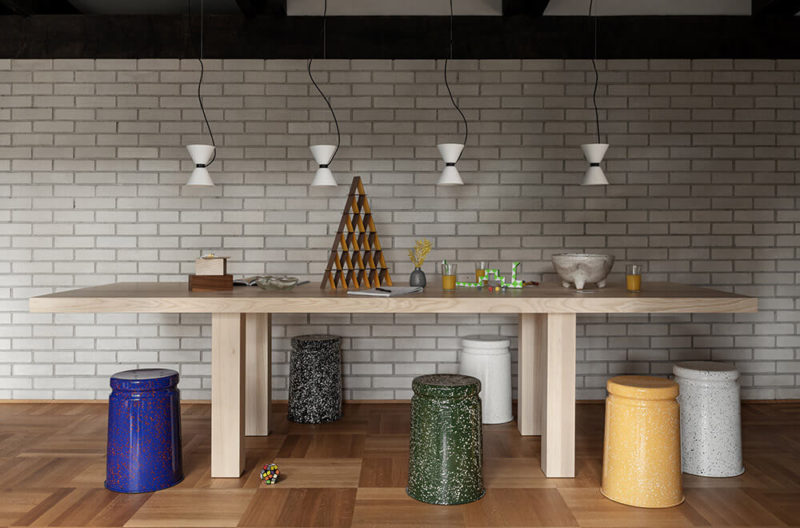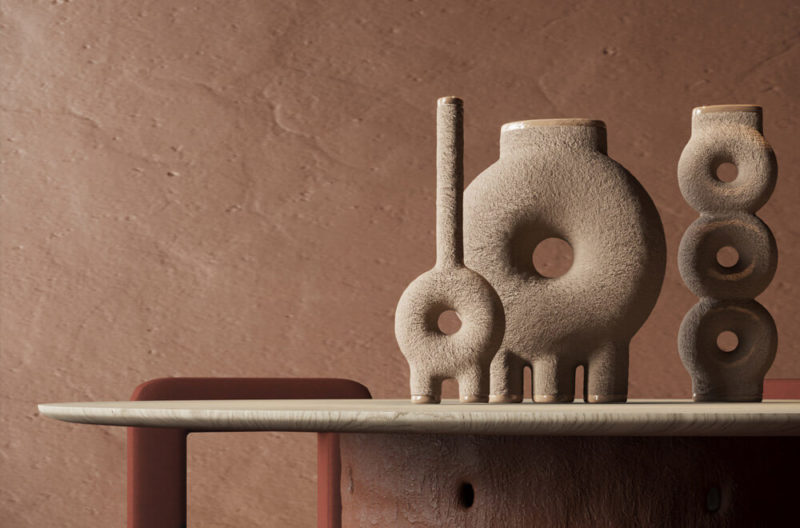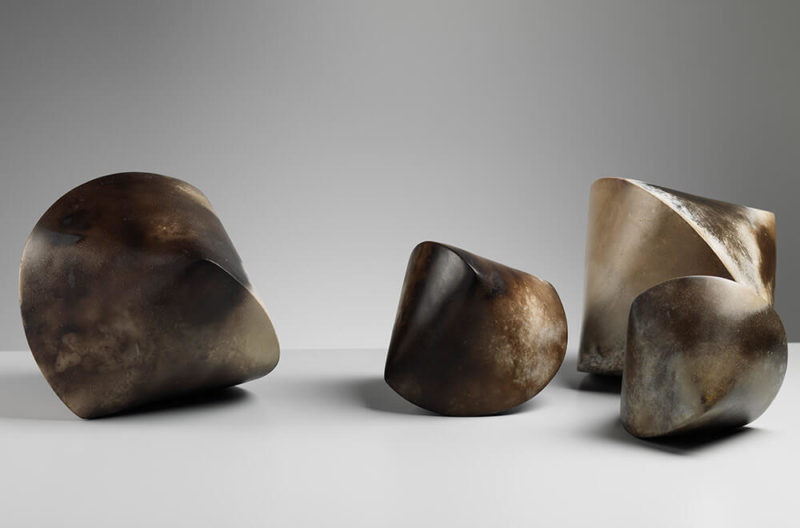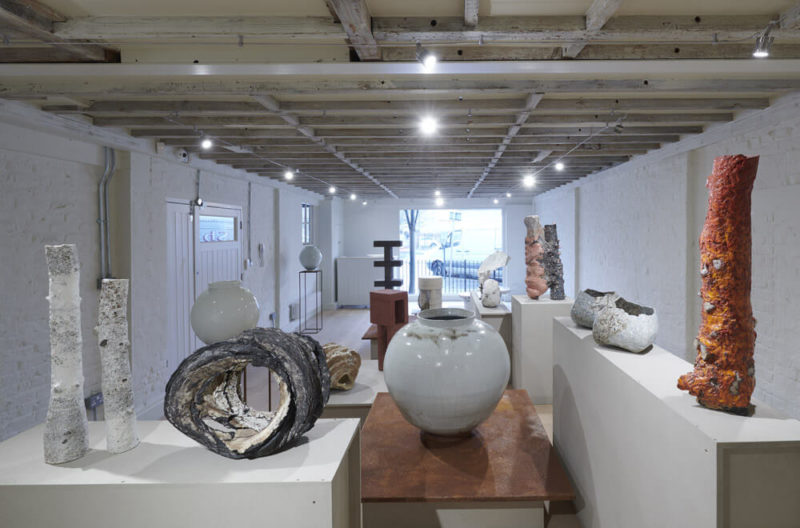TEFAF Maastricht
As the world's premier fine art and antiques fair opens, The Design Edit reports on some of the collectible design masterworks on offer.
MECC Maastricht
7th – 15th March 2020
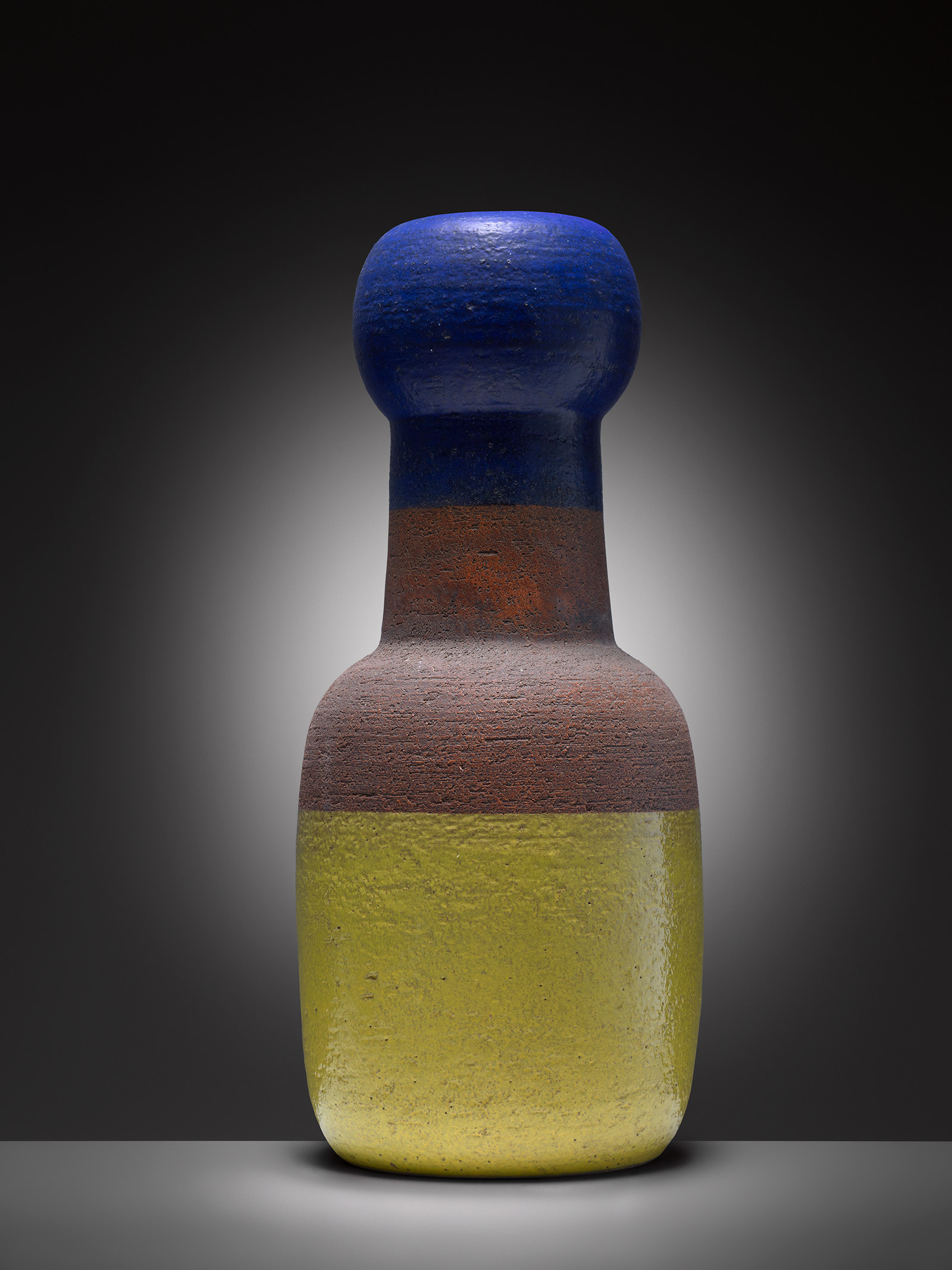
Ettore Sottsass, ‘Lava’, 1957, produced by Bitossi
COURTESY: Friedman Benda
DESIGN GALLERIES ARE making their growing presence felt at TEFAF, The European Fine Art Fair in Maastricht. TEFAF’s 33rd edition sees the number of design exhibitors rise to 20, the largest number in its history. Although this represents a fraction of TEFAF’s overall 278 exhibitors (the majority spanning antiquities, Old Masters, Modern and contemporary art), it indicates design’s increasing popularity among erudite collectors with eclectic taste, as well as the fair’s aim for diversification.
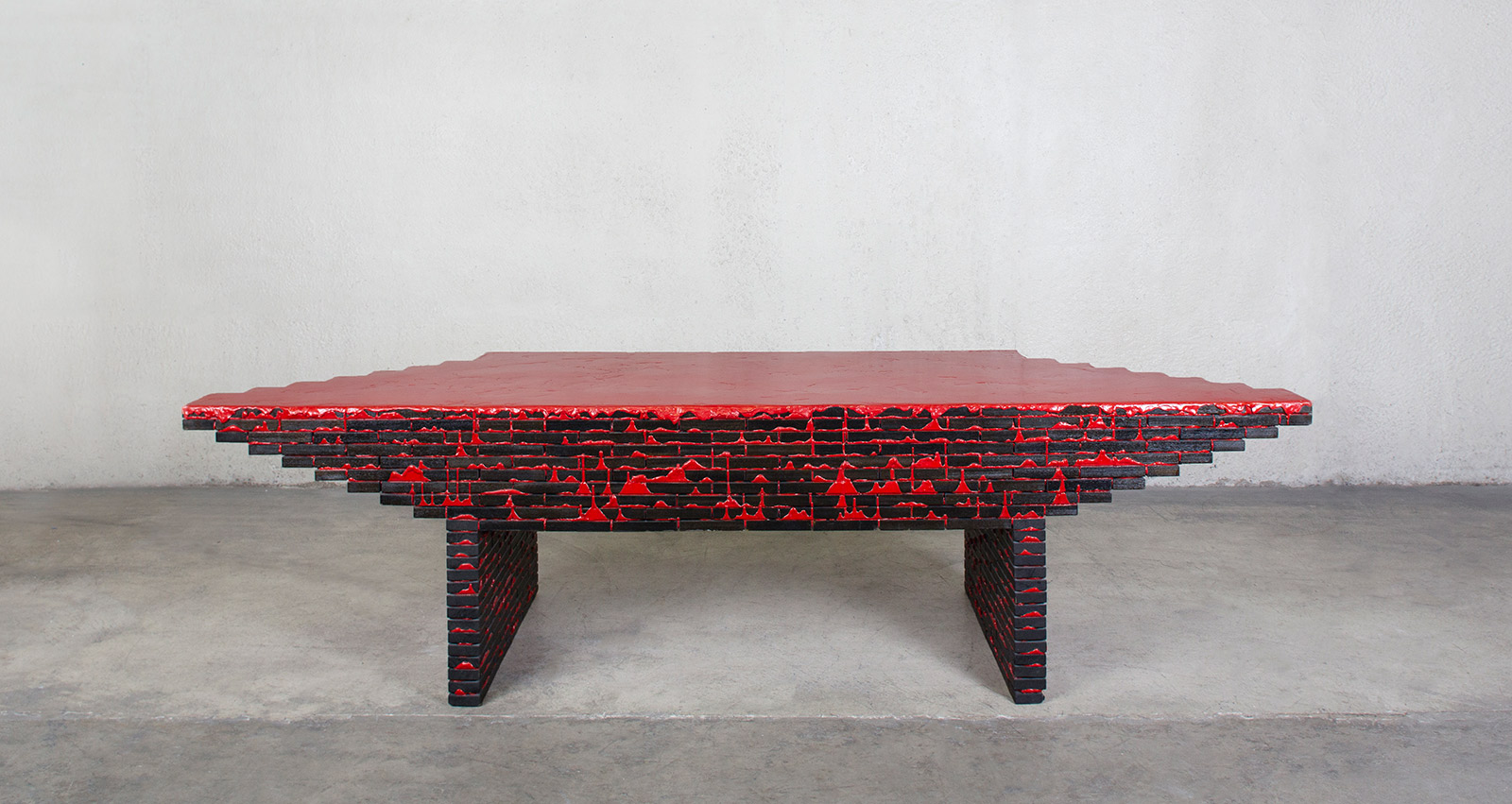
Gaetano Pesce, ‘Arca Desk’, 1972, produced by Bracciodiferro
COURTESY: Friedman Benda
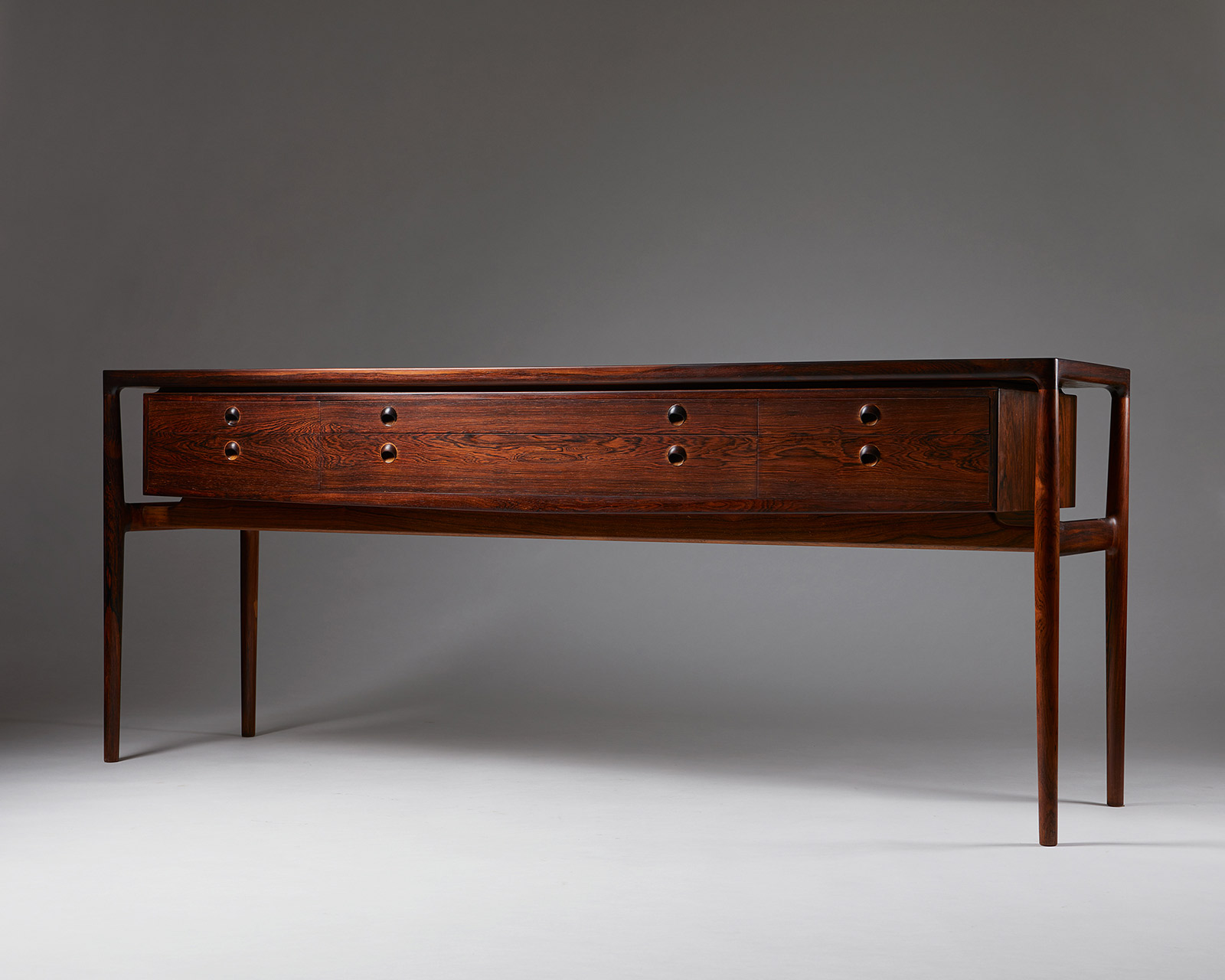
Helge Vestergaard Jensen for Peder Pedersen, rosewood sideboard, 1957
COURTESY: Modernity / PHOTOGRAPH: Åsa Liffner
TEFAF Design was launched in 2009 with nine exhibitors – although François Laffanour of Galerie Downtown in Paris began participating in 2005 in a different section of the fair. “It’s not the quantity but the quality that really matters,” Laffanour says about the number of design galleries. Attracted to TEFAF’s “mix of styles, epochs and tastes”, Laffanour is showing a Charlotte Perriand bookcase, pieces by Jean Prouvé and furniture that the French architect Pierre Parat (1928-2019) created for his own house in Paris. “All this is in line with our core activity that consists of rediscovering and defending twentieth-century architects’ furniture,” Laffanour adds.

Jean Prouvé, ‘The Bridge’ armchair, 1950
COURTESY: Galerie Downtown, François Laffanour, Paris
The opportunity to reach a broader mix of collectors is what appeals to Dansk Møbelkunst Gallery from Copenhagen. “TEFAF is one of a kind in terms of the number of different specialities under the same roof,” senior director Dorte Værnø says. “Twenty galleries is a good number but we would be equally happy to see the design section expand with other top-end galleries.” At TEFAF for the ninth time, Dansk Møbelkunst is juxtaposing a 1946 chandelier with porcelain flowers by Olaf Stæhr-Nielsen (1896-1969) – made for a restaurant in Copenhagen’s Tivoli Gardens – with a perforated, arborescent vase by the ceramist artist Axel Salto (1889-1961).
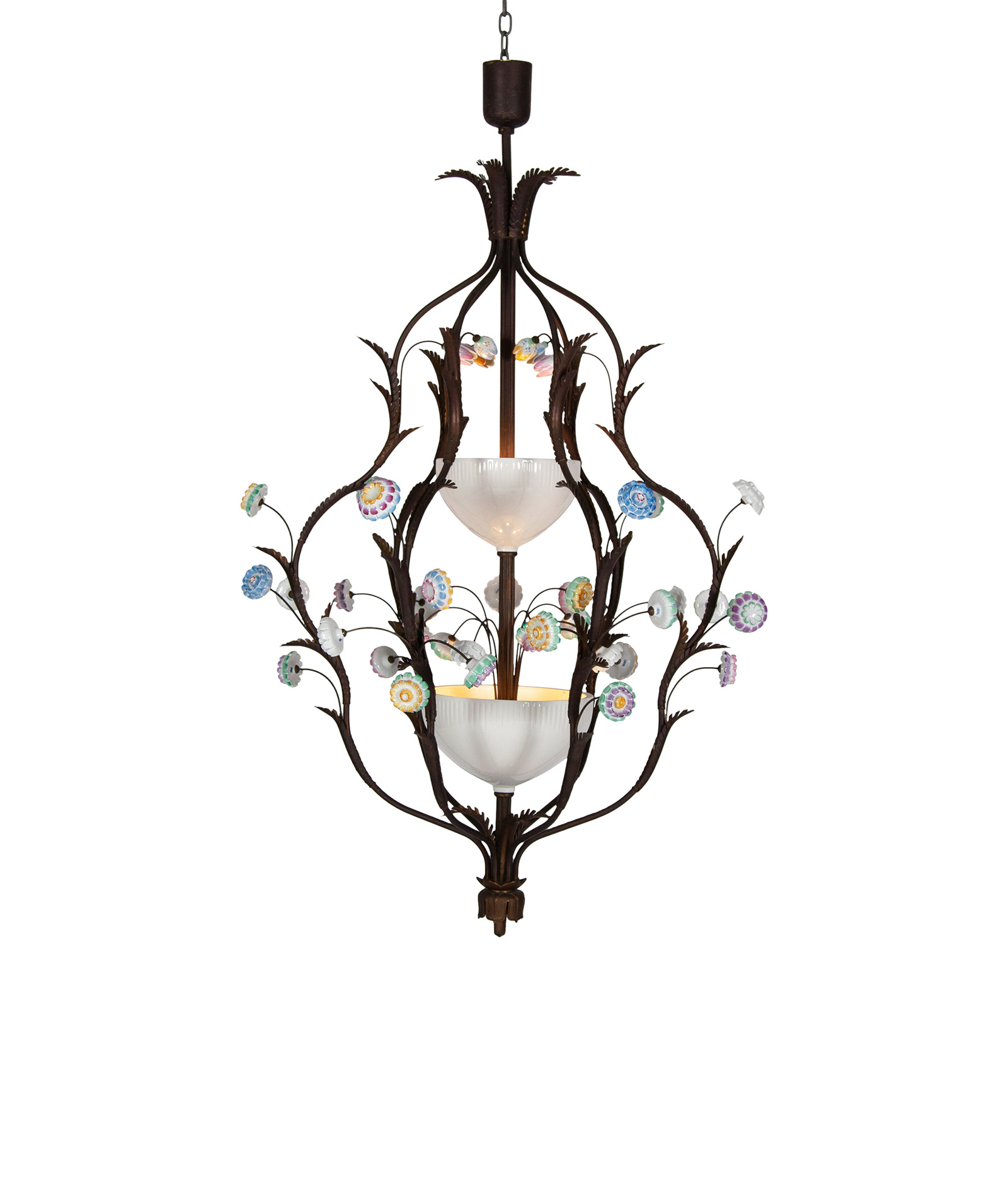
Olaf Stæhr-Nielsen, ‘Tivoli Chandelier’, 1946
COURTESY: Dansk Møbelkunst Gallery
“Dansk Møbelkunst is juxtaposing a 1946 chandelier with porcelain flowers by Olaf Stæhr-Nielsen …”
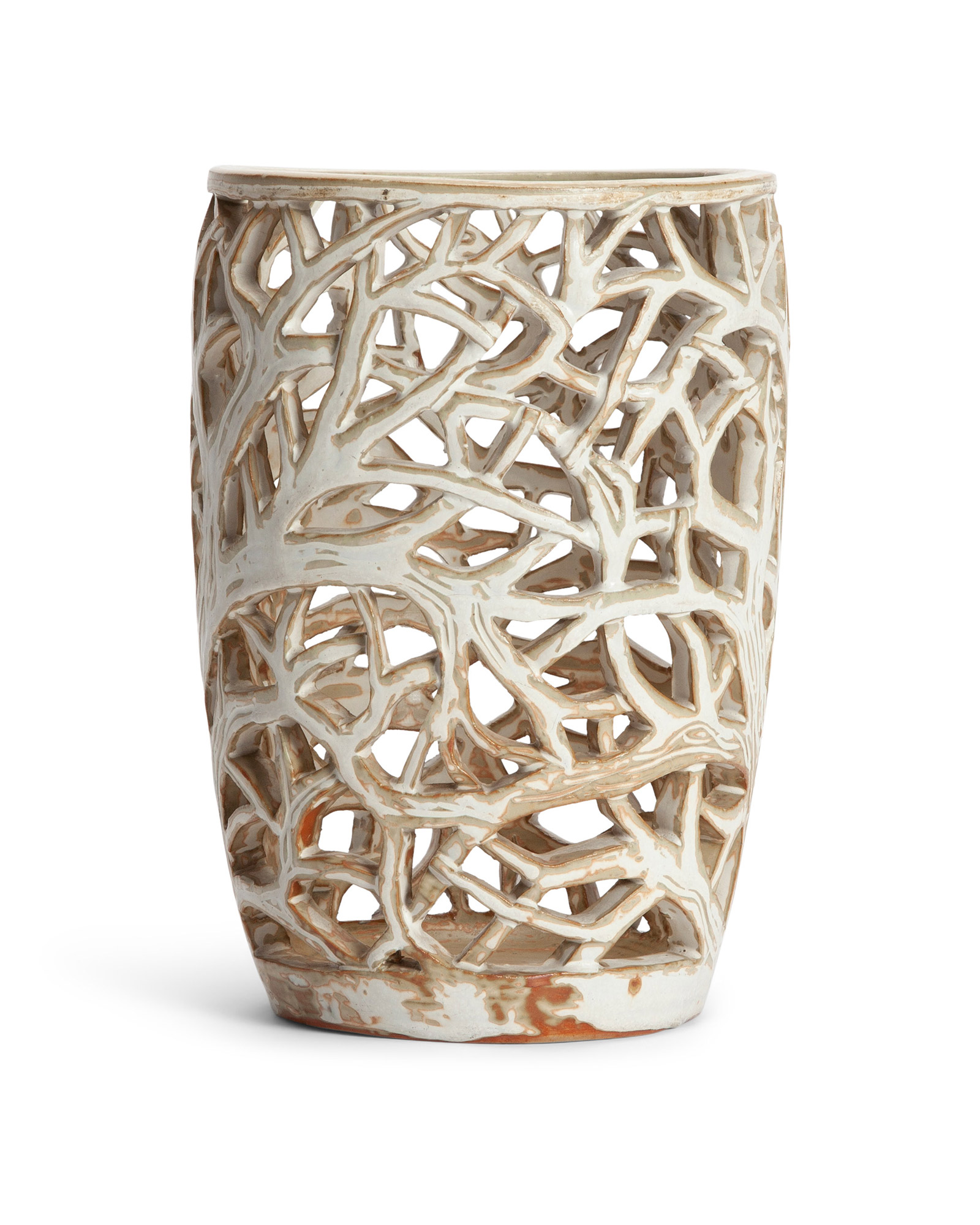
Axel Salto, ‘Perforated vase’, 1939
COURTESY: Dansk Møbelkunst Gallery
“…with a perforated, arborescent vase by the ceramist artist Axel Salto”
Didier Krzentowski, founder of Galerie Kreo (Paris), agrees that TEFAF could benefit from a few more design galleries. “It’d be good if we could reach 25 or 30 because as soon as you have more people, you can reach more collectors and potentially bring them towards design,” Krzentowski says. He is unveiling Jaime Hayon’s typically playful ‘Niko Niko’ Table (2018), its geometric black-and-white patterned marble top sitting on a striped lacquered wood base. “It’s extraordinary how he takes references from how marble was mixed in the 18th and 19th century and reinterprets this with a contemporary eye,” Krzentowski remarks.
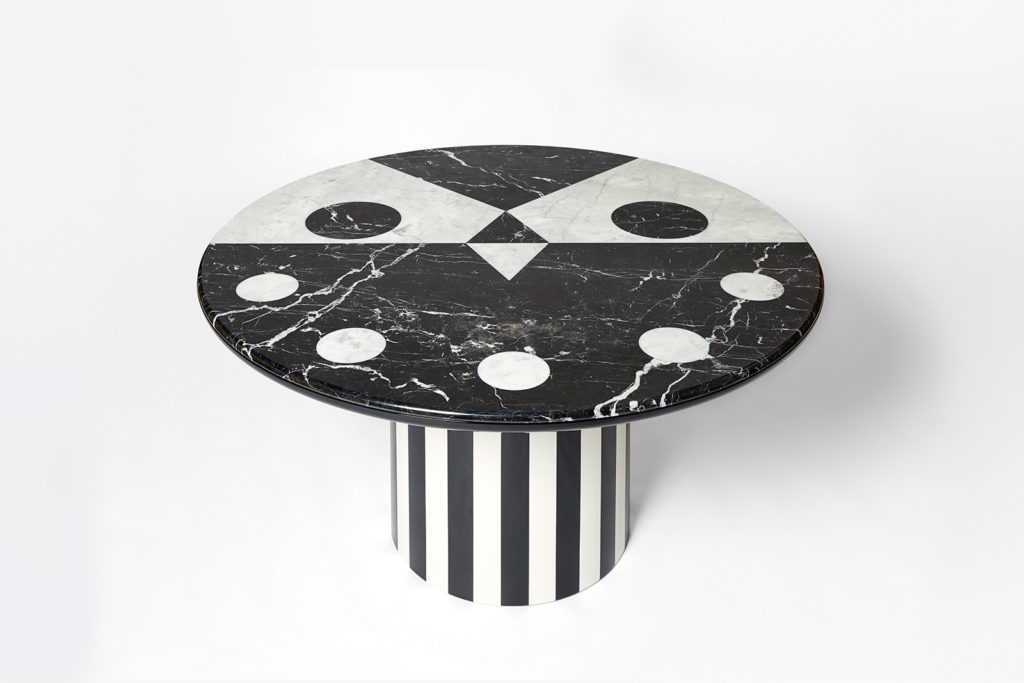
Jaime Hayo, ‘Niko Niko’ table, 2018
COURTESY: Galerie kreo / PHOTOGRAPH: © Sylvie Chan-Liat
TEFAF raises the stakes; it is a demanding fair where collectors expect to discover outstanding pieces. For instance, Galerie Jousse Entreprise from Paris is displaying Pierre Paulin’s ‘Élysée’ coffee table (c.1972), composed of a white Altuglas petal base supporting a circular glass slab – the effect is like looking at a shadowed flower – that was commissioned for the presidential Élysée Palace. Also on the stand are tubular steel frame armchairs by Charlotte Perriand, Le Cobusier and Pierre Jeanneret and recent ceramics by Kristin McKirdy.
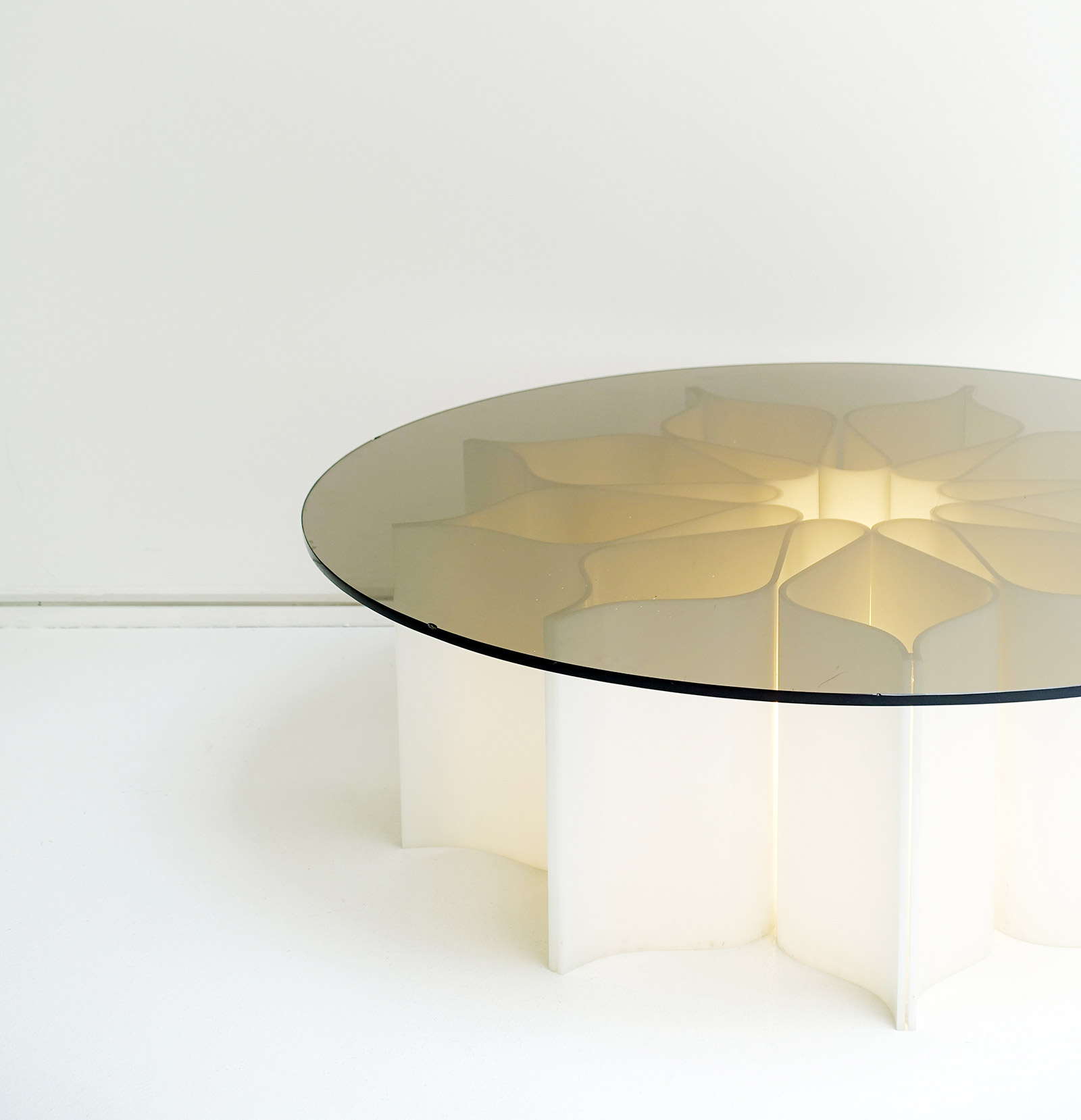
Pierre Paulin, ‘Élysée’ coffee table, circa1972
COURTESY: Galerie Jousse Entreprise, Paris
For New York’s Jason Jacques Gallery, TEFAF is a place to challenge visitors by bringing over unusual pieces. “I push boundaries and constantly present a fresh, new experience so we never look like we did the year before,” Jacques says. “This year, I was feeling the jungle vibe because I just bought a big farm in Costa Rica where we’re building an artist residency/retreat.” Cue a tall ‘Wishbone’ sculpture (1977), carved from a single slab of redwood burl by the American sculptor JB Blunk (1926-2002), and a ‘Carved Armchair’ (1900), painted in a palette of rich dark green and turquoise by the Norwegian furniture creator Lars Kinsarvik (1846-1925), which Jacques refers to as ‘Norwegian Viking Revival furniture’.
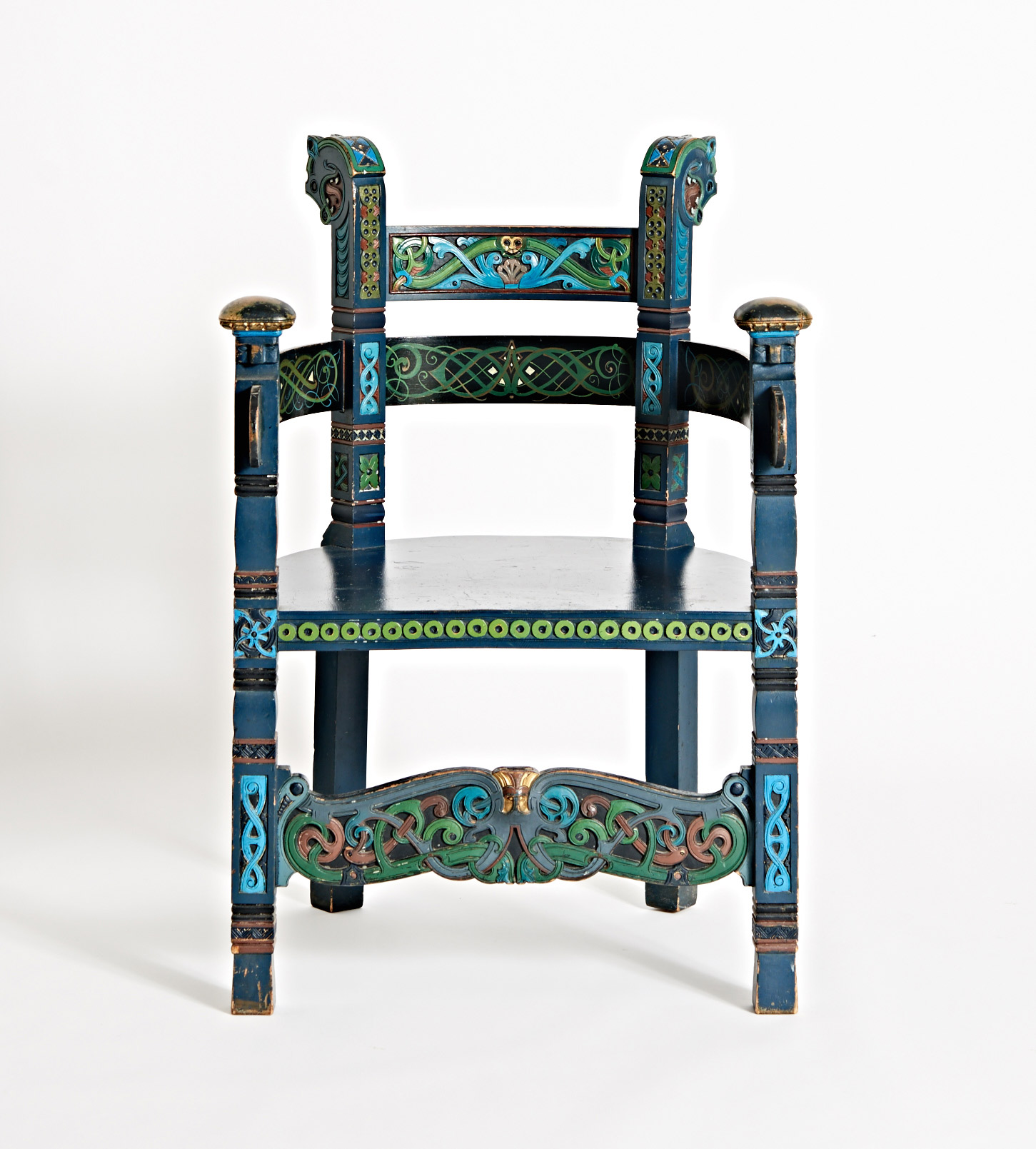
Lars Kinsarvik, ‘Carved Armchair’, 1900
COURTESY: Jason Jacques Gallery
For its inaugural participation in TEFAF Maastricht, after TEFAF New York last November, Friedman Benda is presenting works by Ettore Sottsass, Gaetano Pesce and Shiro Kuramata. “It’ll be the first in-depth survey to showcase the three pioneers’ early critical years side by side,” Marc Benda says. One of these is an oak piece of furniture with drawers in its arms and base made by Kuramata in the 1970s. “In the context of TEFAF Maastricht, your eye demands substance and quality in all fields. We want the public to understand design from a cultural point of view that transcends the objects’ production or use value,” Benda adds.
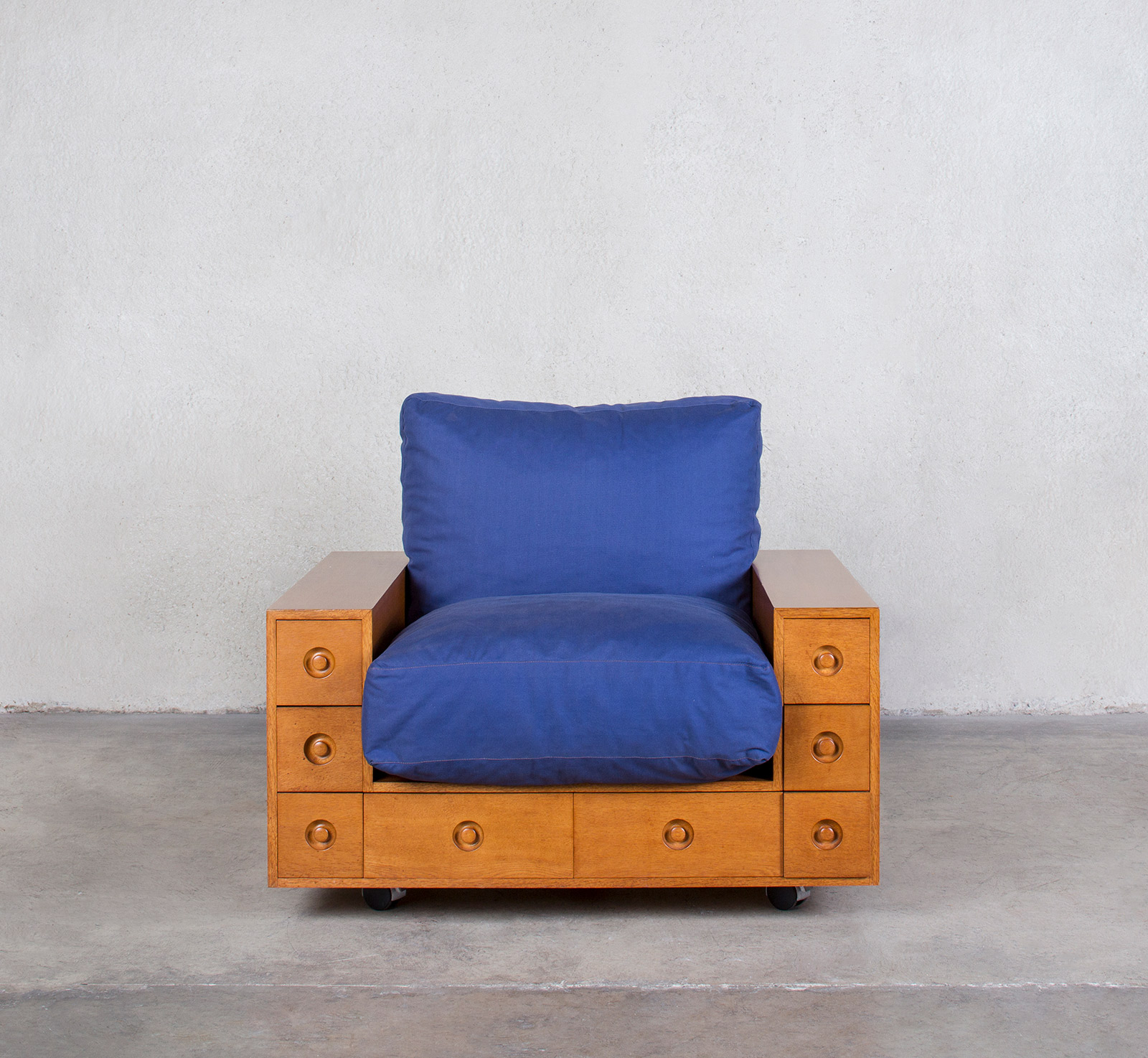
Shiro Kuramata, ‘Furniture with Drawers Armchair from the Soseikan House’, 1974-5, Takarazuka, Hyogo, Japan, designed 1967
COURTESY: Friedman Benda
Carpenters Workshop Gallery (London/Paris/New York) is also striding into TEFAF after a “very successful” edition at TEFAF New York. “As this fair for cross-collecting originated in Maastricht, we felt this would be the place for us to show our functional sculptures,” say Julien Lombrail and Loïc Le Gaillard, founders of Carpenters Workshop Gallery. “The interest in our field, where art and design meet, is growing year by year so I wouldn’t be surprised if the fair decides to grow this section further.” Expect to see Nacho Carbonell’s tree-like floor lamp, furniture by Wendell Castle and Vincenzo de Cotiis, and Ingrid Donat’s ‘Skarabee’ cabinet. “It unfolds like a beetle and when you open its imposing bronze doors, you discover details that mimic the beetle’s wings,” they say about the latter.
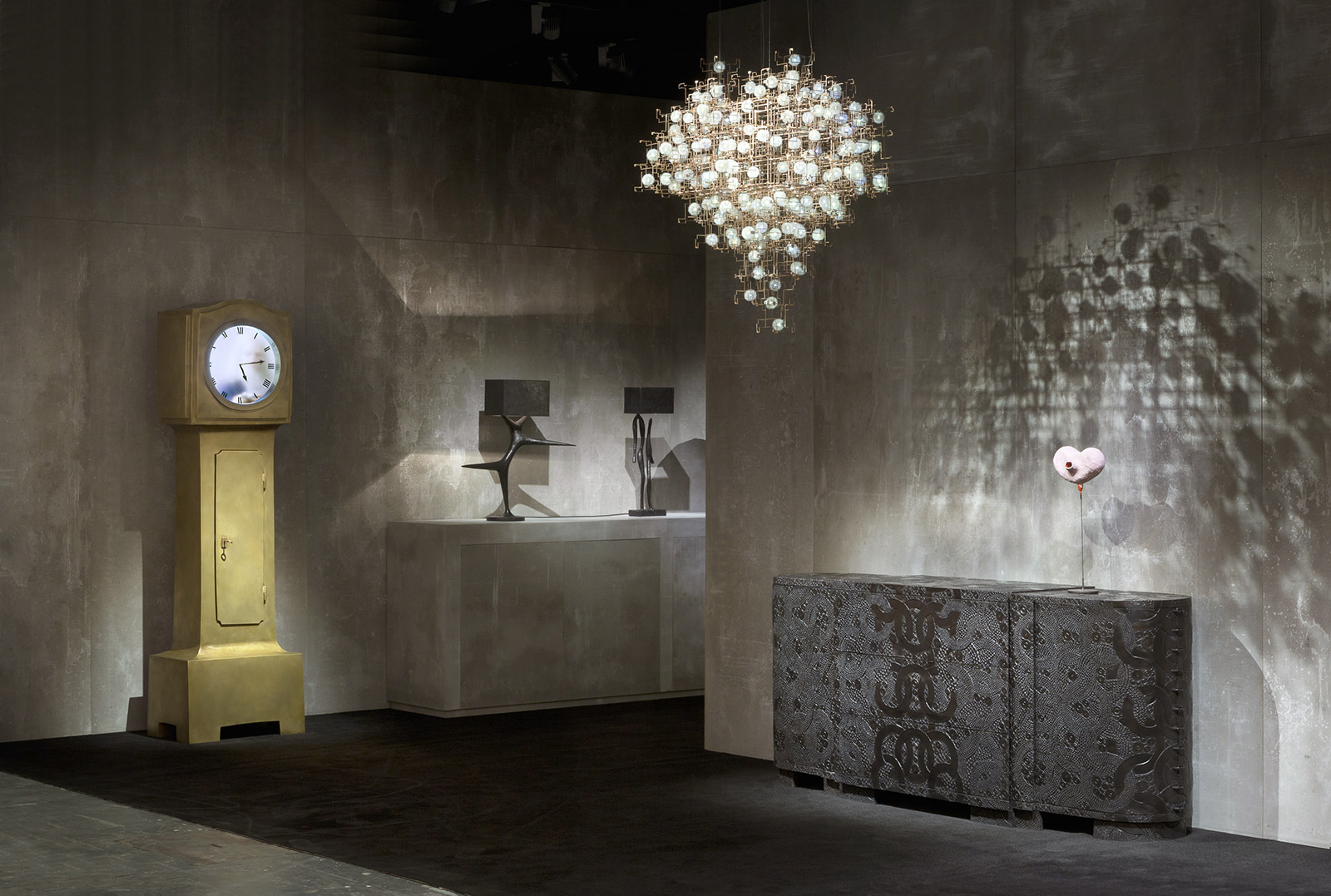
Carpenters Workshop Gallery installation view
COURTESY: Carpenters Workshop Gallery
First-time Parisian exhibitor Galerie Chastel-Maréchal is making an eye-catching stand with 20 alchemical mirrors by Line Vautrin, a 1950s cabinet with straw marquetry by Jean Royère and a ‘Bola de Latão’ chair, 1951, by the Brazilian architect, Lina Bo Bardi. “She created this model exclusively for her house, La Casa De Vidro in São Paulo, for which she designed the plans,” director Aline Chastel says. “This chair is the only one available from the original series on the market; the other five are in Casa De Vidro.”
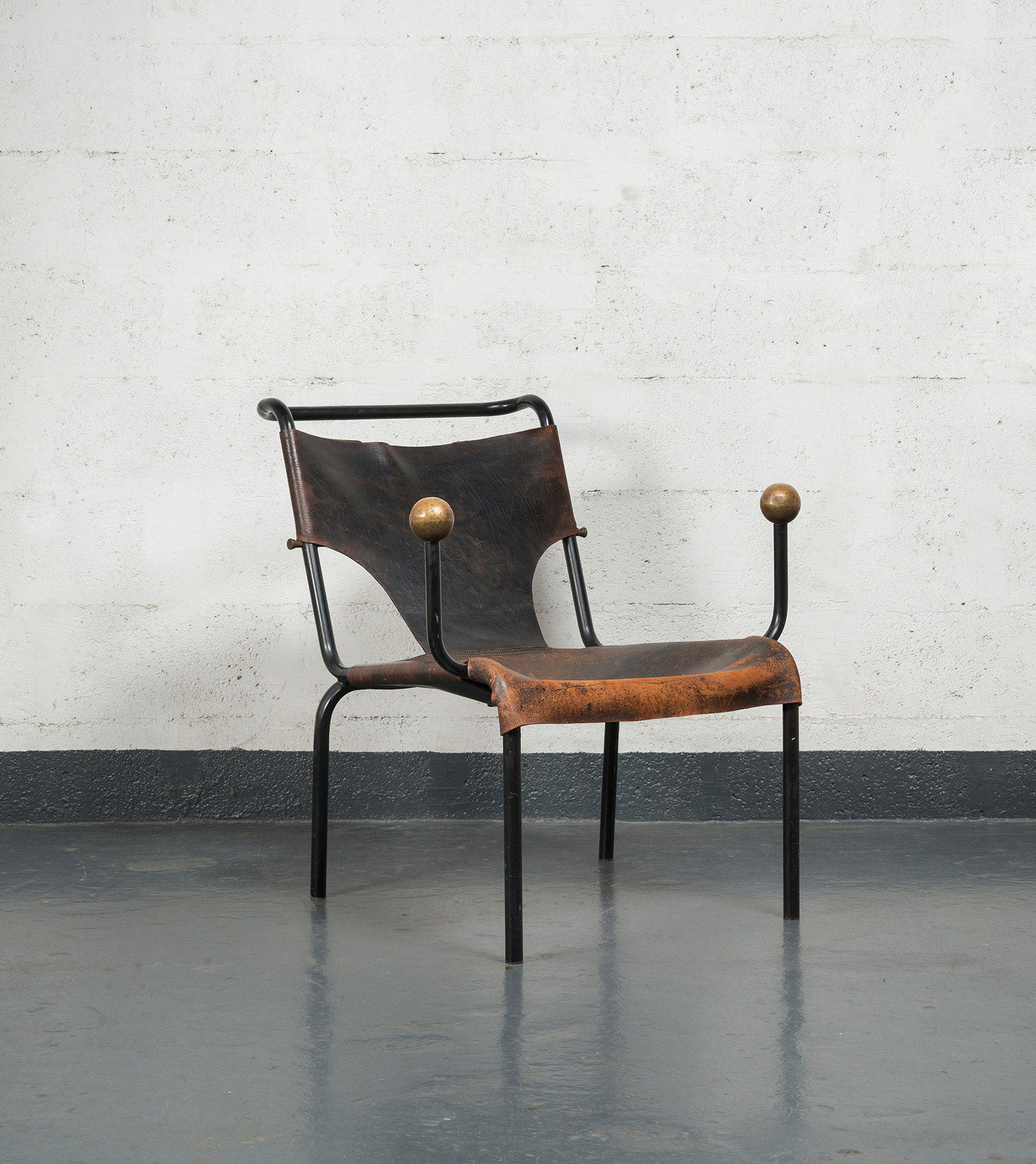
Lina Bo Bardi, ‘Bola de Latão’ chair, 1951
COURTESY: Galerie Chastel Maréchal / PHOTOGRAPH: © Agence Phar – V. Luc & J. Beylard
Meanwhile, fellow newbie Maria Wettergren – the Paris dealer who defends Scandinavian design – is mingling works by 15 designers on her stand. Among them are Gjertrud Hals’s recent intricate sculptures made with copper threads, Cecilie Bendixen’s ‘Wave’ (2019), a pleated textile and light fixture, and Hanne Friis’s new hand-stitched, fibre sculptures.
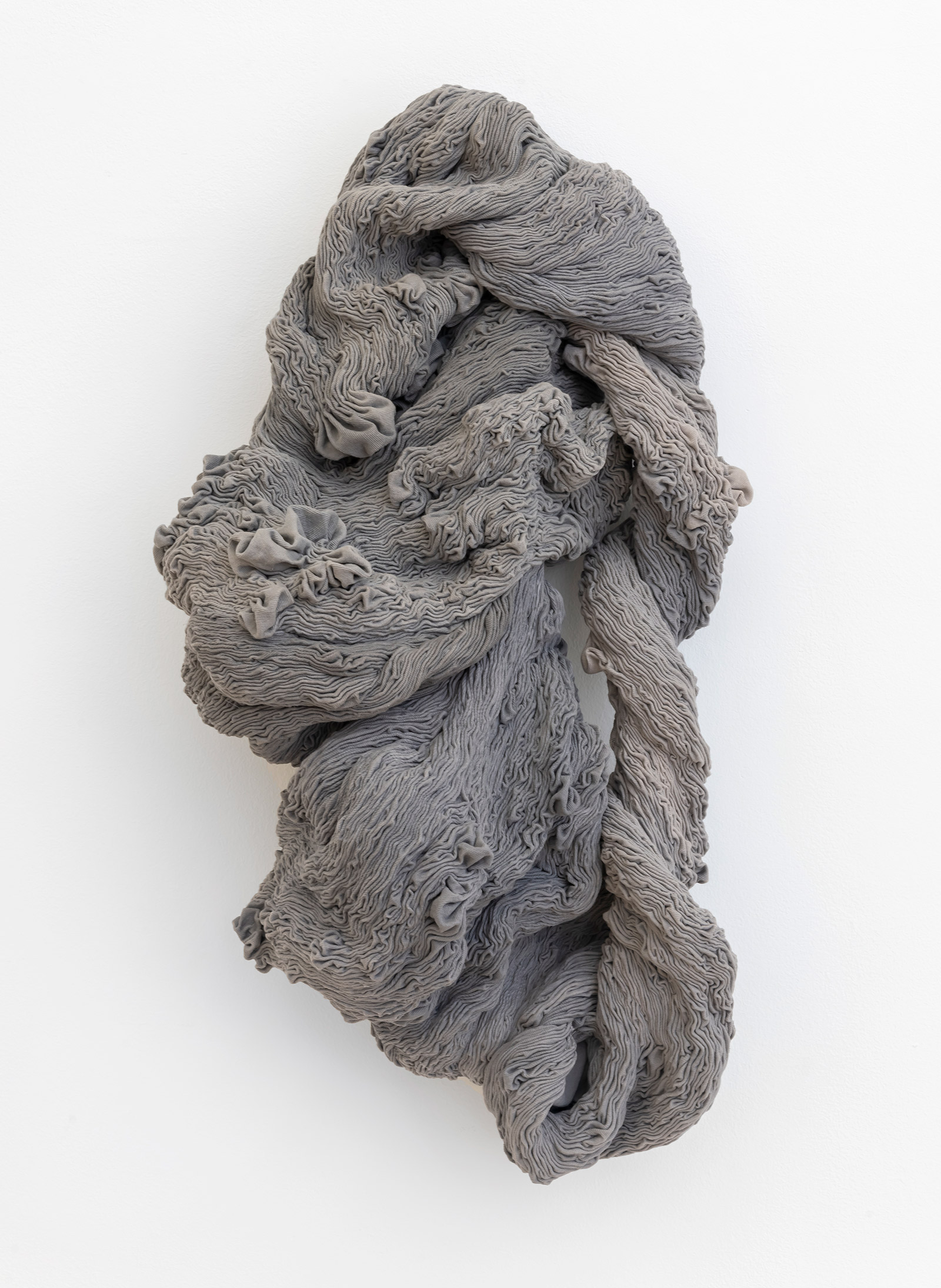
Hanne Friis, ‘Ornament’ grey, 2019
COURTESY: Hanne Friis and Galerie Maria Wettergren, Paris / PHOTOGRAPH: Øystein Thorvaldsen
TEFAF Maastricht– is widely regarded as the world’s premier fair for fine art, antiques and design.




